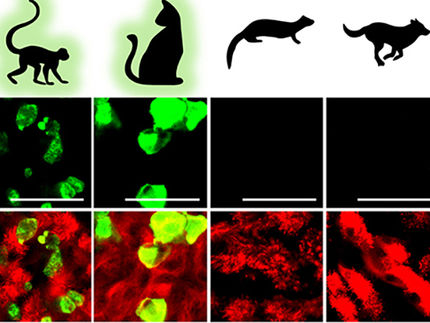Chemicals in pet feces may signal threats to human health
Primary aromatic amines (AAs) predominated by dimethylaniline, were found in pet urine and feces
dogs and cats may be exposed in their homes to a potentially toxic group of chemicals, with their discovery in the pets’ stool being a sign of health issues for humans living with them, a new study shows.

Symbolic image
pixabay.com
Called aromatic amines, the chemicals — found in tobacco smoke and in dyes used in cosmetics, textiles, and plastics — are known to cause cancer. Notably, the study revealed that tobacco smoke was not a major source of pet exposure, suggesting that the latter products were likely the main culprits.
Led by researchers at NYU Grossman School of Medicine, the study identified eight types of aromatic amines in stool samples collected from dozens of dogs and cats. It also found traces of the chemicals in more than 38% of urine samples taken from a separate group of pets.
“Our findings suggest that pets are coming into contact with aromatic amines that leach from products in their household environment,” says study lead author Sridhar Chinthakindi, PhD, a postdoctoral fellow at NYU Langone Health. “As these substances have been tied to bladder, colorectal, and other forms of cancer, our results may help explain why so many dogs and cats develop such diseases.”
He adds that the results suggest that, aside from such direct exposures, pets are likely indirectly exposed. For example, past research has shown that a common flea control medication called amitraz can be broken down into an aromatic amine called 2,6-dimethylaniline by microbes living in animals’ digestive systems. This was the most common aromatic amine detected in the new study, accounting for almost 70 percent of those found in dogs and nearly 80 percent of those found in cats.
The study authors’ previous investigations have measured other hormone-disrupting chemicals, including phthalates, melamine, and bisphenols in pet urine. However, the new study, published online March 30 in the journal Environment International, is the first designed to explore pet exposure to aromatic amines in the household, according to Chinthakindi.
For the investigation, the research team collected urine samples from 42 dogs and 21 cats living in private households, veterinary hospitals, and animal shelters in Albany, NY. They also collected fecal samples from another 77 pets living in the same region. They recorded all of the animals’ ages, breeds, and sexes. Then, the research team analyzed the samples for evidence of 30 different kinds of aromatic amines and nicotine.
Among the findings were that cats had at least triple the concentrations of aromatic amines in their urine as dogs, although the study authors say both greater exposure and differences in metabolism between the two species likely play a role in the concentrations of the chemicals found. Notably, cats do not break down many compounds as efficiently as dogs.
The investigation also showed little difference in aromatic amine exposure between animals that lived at home compared with those that lived in a shelter or those that were staying at a veterinary hospital. According to Chinthakindi, this highlights how commonly these substances appear and how difficult they are to avoid.
“Since pets are smaller and more sensitive to toxins, they serve as excellent ‘canaries in the coal mine’ for assessing chemical risks to human health,” says study senior author Kurunthachalam Kannan, PhD, a professor in the Department of Pediatrics at NYU Langone. “If they are getting exposed to toxins in our homes, then we had better take a closer look at our own exposure.”
Kannan, also a professor in NYU Langone’s Center for Investigation of Environmental Hazards, cautions that it remains unclear what aromatic amine levels can be safely tolerated by pets, and so far, no limit has been set by regulatory organizations for their protection.
He adds that the study authors next plan to explore the link between aromatic amine exposure and bladder, thyroid, and testicular cancer in pets.























































